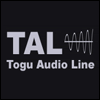Another quick dismissal on Arturia. There are some who don't like it, but there many who do. I guess it's impossible to please everybody. But there are two emulations already. That's a fact. And, as you pointed, Zebra does a good job too (not only in this, in so much more). But Zebra is not emulating anything, and recreating a particular synth architecture in it is a painful job.david.beholder wrote:Arturia sound like crap. There are quite few threads of arguing about it and matters (there's no such threads about Diva, UNO/Bassline or Monark)fmr wrote:Yamaha CS - two good emulations already - Arturia and Gunnar;
ME80 is ok, but I've heard quite a few zebra demos that sound better (yes, I have polyphonic aftertouch keyboard and vangelis in closet)
I was checking the Polymoog, and heard some sounds, and it could be interesting to develop something around it's basis - but it had to be much more extended in programability - a simple emulation would be disapointing, I guess. It would requeire a different approach, IMO.david.beholder wrote:Polymoog: Divide down architecture + moog filter + resonator. Quite distinctive oftenly non string machine sound.fmr wrote:Polymoog - what's so interesting about it?
So, we consider this checked, right? And again, the simplistic assertion "It doesn't sound like ARP". What ARP? I bet you would say that if I presented you a real ARP recorded, and told you it was a plug-in.david.beholder wrote:Timewarp demos are nice but but it doesn't sound like arp. Never heard Oddity.fmr wrote:ARPs with ARP filter. Gforce Oddity, Arturia ARP 2600V, WOW TimewARP. What's with these?
You lost me here - Do you have a string machine, or records of a string machine? Because I have lots of records with string machines, you know? And the emulations I mentioned get the specific genre well covered for me.david.beholder wrote:Do you have string machine? I have quite a few of records where arp omni sounds amazing. None of plugins are sounding close enought: they are too stable, they envs are respoding differently and filter doesn't sound the way hardware sound. They good only with phaser for certain jarre sounds, not further. For example on one of my favorite childhood vynils they are used as bellish eps, basic pads and harsh viola like sounds. Emus doesn't go further than basic string sound.fmr wrote:String Machine: WOK Cromina, Night Flight and Xils V+;
ARP Omni is not even THE string machine - that honour belongs to the Solina and the Eminent, AFAIK, or to the Roland VP-330, Crumar Performer and Elka Rhapsody. The Omni doesn't even qualify as a string machine (quoting VSE: "The Omni is an analog synth with preset Orchestral String sounds. It has polyphonic Violin and Viola waveforms as well as monophonic Bass and Cello waveforms. It is split into 3 sections: Strings, Synthesizer, and Bass synth - all simultaneously available."). Seems too limited to deserve an emulation, IMO. A sample library (and there are some) may get the job done good enough here. Specially if we could run it through a powerful synth engine like the ones in HALion or Mach Five.
EDIT: I was checking, and the Omni seems to not even catch the attention of the sample library producers


